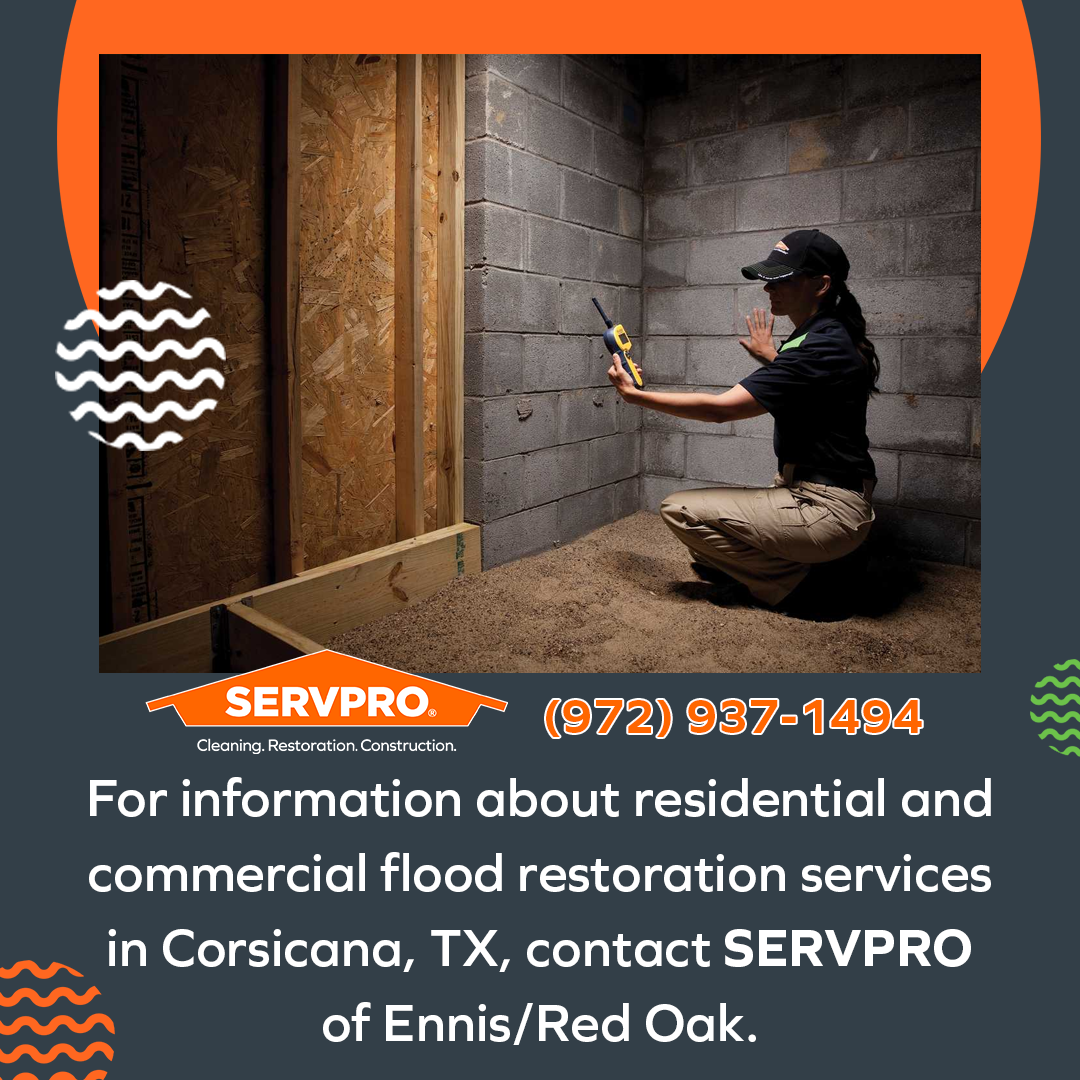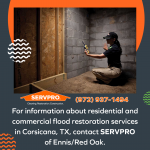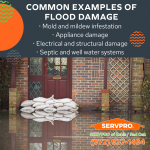SERVPRO of Ennis/Red Oak is the customer’s choice for flood restoration services. A flood is a powerful event that can cause extensive damage to a home or business. Many homes are at risk of flooding. A local river or stream could overflow its banks, or a stalled thunderstorm could cause localized flooding involving only a few houses. The remnants of a hurricane may dump nearly a foot or more of rain in a region that rarely experiences more than an inch or two of rain at a time. The flooding may affect only the garage. A home in a low-lying area may be slowly engulfed by rising waters that fill the structure with only an inch or two of water. In a worst-case scenario, the house could be inundated by several feet of water, causing extensive water damage.
.png)
Floodwater differs from water from a burst supply line to the washing machine. Water from the supply line is clean, but floodwater is contaminated with sediment, soil, chemicals, pathogens, and raw sewage. Damage caused by floodwaters creates a complex disaster scene. The cleanup and restoration process is more complicated than removing the water with powerful wet-dry vacuums, eliminating the remaining moisture with industrial-strength dehumidifiers, and replacing unsalvageable flooring. The homeowner must understand the home damage a flood can inflict so that they can be prepared by taking the appropriate steps to protect their property.
How can a flood damage a home?
A flood is a very powerful force that can wreck a home. When flooding occurs, take the following precautions before ever entering a flood-damaged structure:
- Conduct a visual inspection of the exterior of the home for structural damage.
- Watch out for downed power lines, broken tree limbs that might have damaged the roof, or hanging limbs that might fall to the ground in a gust of wind.
- Do a sniff test for gas leaks.
- If the home had to be evacuated due to the flooding, enter the structure only if it is absolutely safe to do so.
Common examples of flood damage
Flood damage impacts the entire home. The list below addresses some of the most common examples of flood damage:
- Mold and mildew infestation
- Appliance damage
- Electrical and structural damage
- Septic and well water systems
Mold and mildew
Warmth, moisture, and organic matter such as wood, drywall, clothing, paper, and insulation are abundant during and after a flood. Within 24 to 48 hours, mold and mildew can gain a foothold. By the time the homeowner spots blotches of mold, the infestation is in process. The growth of mold and mildew can be slowed or prevented by removing excess water from the home and running dehumidifiers to dry out the structure. The safest and quickest way to deal with mold and mildew is to hire a team of IICRC-certified flood damage and water damage professionals at SERVPRO of Ennis/Red Oak. They have the powerful equipment needed to remove the water and moisture from the flooded structure. Flood water is filled with pathogens, chemicals, and raw sewage. Delays can lead to advanced secondary damage, including a structure-wide mold and mildew infestation. Due to flooding, the power grid may be down for days or weeks, but the SERVPRO team is prepared with generators to power the cleanup and restoration project.
Appliance damage
Floodwaters can compromise the HVAC system, water heater, refrigerator, and other household appliances. Protect appliances from further damage by shutting off the power at the main breaker. Use the device only after a certified electrician has approved the structure. Do not operate any appliances, including the HVAC system, until the appliances have been properly cleaned, restored, and inspected by reputable professionals.
Structural and electrical damage
Buckled or loose roof sheathing and cracks in the foundation are signs of structural flood damage. Electrical wiring may be frayed. Avoid contact with electrical wiring, outlets, switches, and appliances while standing in water or wearing wet clothes.
Damage to septic and well water systems
During a flood, the septic tank filter may clog with debris from the intake of contaminated floodwater. Schedule an inspection as soon as possible after a flood. Materials carried by the floodwaters can flow into wells, contaminating the well water with sediments, organic debris, and raw sewage. Ensure that the well water is tested and treated before drinking.
.png)
For more information about commercial and residential flood restoration services in Corsicana, TX, contact the SERVPRO of Ennis/Red Oak office by phone at (972) 937-1494 or by email at acarey@servpro10932.com.
































